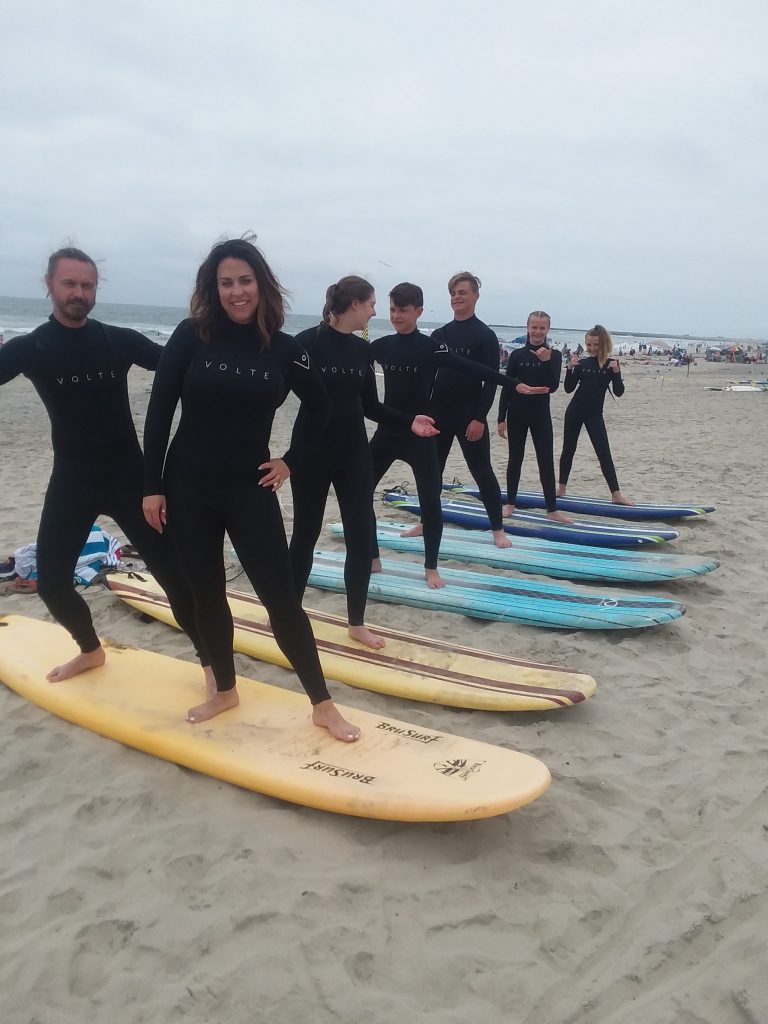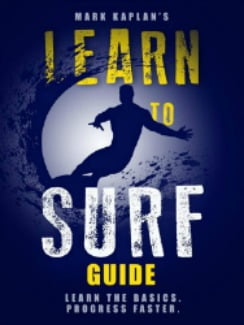How to Progress After the First Surf Lesson
Most students ask how to progress after the first surf lesson. Progress is easier if you live locally to the ocean. For those visiting from inland locales, it is more difficult. The quickest progress is made by frequent trips to the water.
In between surf sessions, however, you can make progress by working on your physical attributes and techniques. Surfing is one of the more complete full body recreations. It exercises upper and lower body as well as the cardiovascular system.

Work Outs In Between Surf Sessions
Surfers find they often have three deficiencies or areas they could improve to progress in surfing. The first area is upper body strength, especially for women or people that are overweight. Push ups are the best exercise to build arms, shoulders, and chest for pushing up on the surfboard. There is a power to weight ratio which states you must have the strength to lift your weight off the surf board.
A second area in need of improvement is flexibility. People can often touch their toes without bending their knees, but they cant’ get their rear foot flat on the surf board under their butt. This is necessary for beginners to stand up. We get tight in our hamstrings, buttocks, and lower back mostly from being sedentary. I like burpees to keep the body loose. Obviously, yoga is good. Dead lifts and squats are good when you can return to the gym.
A third important component is stamina and the ability to recover from quick exertions. Surfing is all about the paddling. Few people are regular swimmers. Aerobic exercise like biking, running, treadmills, and hiking help build stamina and recovery. Once a surfer is tired, everything starts to fall apart including learning.
New surfers can practice the pop up in their living room to improve smoothness and build the necessary musculature. I tell students to lay down and place a book where their hands are in a man’s push up position. Then put a quarter in between their hands. The front foot of the pop up should reach the book and land on the quarter.
Lean is good. When surfers are overweight, it puts a strain on all the techniques. If surfing is a long term endeavor, it pays to eat well and trim weight. Watching video on catching waves and even reading about techniques can help. Observing surfers in the water executing the next step you want to achieve helps as well as asking them how to do certain maneuvers.
Have fun.
Learn More
My New Surfing Course in an E-Book plus Demo Video or Audio Version
Get the 18 Chapter, 7,500 word Course that can prepare you for a lesson or give you the fundamentals if you are going to try it on your own. 10 years of teaching 350 students a year has given me the insights on the most precise measures you must follow for success. This course is what I teach on the dry land and in water instruction. The Course includes a 15 minute video on my dry land and in water demonstration. Only $4.95
Buy the E-Book and start learning $2.99. Learn to Surf
Buy the Paperback on Amazon $7.95
Get Learn to Surf Course in 29 minute AUDIO. Great prep for a lesson, reviewing after a lesson, learning on your own, refreshing after not having surfed for a while. See Table of Contents. Only $7.95.

For Oceanside Surf Lessons, see the Home Page
See the Post Search Lessons Teach Fundamentals
See the Post Catching Real Surf Waves
See my Dry Land and in Water Demo video
See my other Surf site for more Posts
I have lowered the price of Courses and Books for the lock down price of $2.99
80 page Learn to Surf Book
![Surf Instructions Beginner to Advanced: Learn to Ride Waves by [Kaplan, Mark]](https://images-na.ssl-images-amazon.com/images/I/51HswFtoBQL.jpg)